The passion for trashy movies: When a film fiasco wins over fans
A Turkish E.T., a vampire motorcycle, an Indonesian Terminator, a Bruce Lee wannabe... According to critics, unintentionally bad cinema is gaining a wider public due to the lack of originality in today’s blockbusters


E.T. didn’t just come down to Earth in the Steven Spielberg movie. He also landed in South Africa, Turkey and again in the United States, as well as in other countries. Although his name wasn’t E.T., and his appearance left a lot to be desired. These aliens starred in movies such as Nukie and Mac and Me, some of the most outrageous ripoffs of the classic film.
“We didn’t just screen the first Turkish version [of E.T.] — Badi — another one was also shot in the country, in which E.T., who is male, falls in love with the man in whose house he takes refuge,” explains Carlos Palencia, the head of CutreCon, a Spanish festival dedicated to cinema that is unintentionally bad.
CutreCon — which will hold its 14th edition next year between February 5 and 8 — shines a spotlight on trashy movies, the films made with lofty intentions that fell apart in production and became unwitting parodies. With audiences keen for different cinema experiences, these movies are winning over a passionate legion of fans, filling theaters with laughing and disbelieving spectators.
But it’s important to define this genre: trash cinema is not the same as bad cinema. “The beauty of trash cinema is that to recognize it you have to have seen very good films. It is the leap between The Searchers and a piece of shit starring Eric Roberts and Michael Paré with a pair of pistols,” explains movie critic Fausto Fernández.
Trash cinema is not the same as B-series cinema, either. “Some people get confused. Having little money helps to land you in this genre, but it is not important. There are wonders in B-series cinema,” says Palencia. “For our festival, we choose films that aim to make you laugh without meaning to, unintentional comedies with or without a big budget. Feature films with plots that are so absurd that the audience, instead of following what is happening on screen, is in disbelief, and enjoys it from a new perspective. Whether it is because of the lame special effects, impossible-to-follow editing or crazy script decisions.”
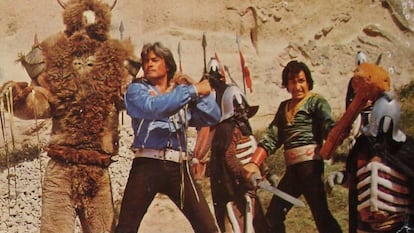
Not everyone agrees that trashy movies are funny. Domingo López, a member of the programming committee of the Sitges Film Festival, disagrees: “I know I am in the minority and I debate this a lot with friends. When you scrape the surface of world cinema, what remains at the bottom of the barrel is trashy cinema. That is where the surprises are, the unusual in its absurdity. Trash cinema is born from great involuntary discoveries, not from films that make you laugh, although I understand that at events, movie sessions and competitions those are the ones that work best.”

Trash cinema is not just about ripoffs, but there are many that fall into this category. The list includes Dünyayi Kurtaran Adam (1982), a Turkish version of Star Wars; the Chinese version of Dracula, where the legendary vampire advancing by leaps and bounds; Space Monster Gwangmagwi (1967), a South Korean version of Godzilla, which was the country’s first science fiction film; A. P. E. (1976), a Korean version of King Kong, shot quickly to take advantage of the interest in the Jessica Lange movie; and Lady Terminator (1989), the Indonesian ripoff of Cameron’s classic...
“There are cheap imitations of Pixar’s greatest hits, obscene Korean versions of Transformers, disturbing Georgian plagiarisms of The Simpsons... There’s everything,” says Palencia.
“On the platforms, the algorithm produces cheesy films that imitate previous releases on those same websites,” adds Fernández. “The latest disaster that confirms this is Jackpot! on Prime Video.”

And that’s not to mention the hundreds of Rambo knockoffs, like Deadly Prey. Or Brucexploitation, a whole film subgenre involving Bruce Lee look-like actors in imitation martial art movies. Take for example Taiwan’s John Liu, the director of Liu in Paris (1981), Dragon Blood: Liu in Mexico (1982), Made in China (1982) — shot on Spain’s Costa Brava (just look at the street names), although it was set in Zambia and France — and New York Ninja (1984). Liu ended up in jail in the Spanish city of Zaragoza for filming porn with minors. Now, the 80-year-old is retired and lives in Taiwan.
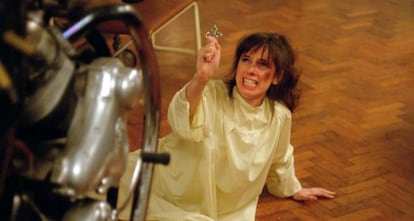
That’s why the best trashy movies aren’t trying to be trashy. Like the films of the legendary Ed Wood or The Room (2003) by Tommy Wiseau, which has become a cult classic. Indeed, the movie made such an impact that James Franco directed and starred in a movie about how it was filmed called The Disaster Artist (2017), which was nominated for the Oscar for Best Adapted Screenplay — a level of critical acclaim that The Room never reached. And a tribute to the movie, The Room Returns!, starring Bob Odenkirk (Better Call Saul) is soon to be released.
“One thing is the typical low-budget or Z-series films or very exotic movies like the Filipino Batman, the Japanese Spider-Man or the Korean Ninja Turtles. Those are bad and make you laugh from day one,” explains Palenica, who adds that other films — which take themselves too seriously — can also appear ridiculous, regardless of their budget. “What will happen with Cats in a decade? I think it will be some kind of cult movie in trashy cinema. Like that Transformers 2, which has even been made fun of in the series The Boys, where it is used as a measure of idiocy.”
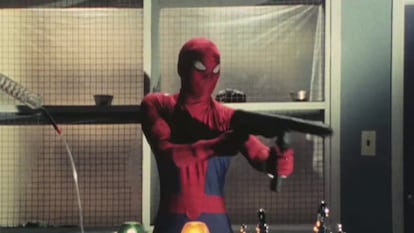
A growing number of people love trashy movies, and while they are also fans of B-movies, they know how to tell the difference between the two. “There have always been bad films,” says Fernández. “In the 1940s in Hollywood, the Monogram production company was dedicated to making them, and now The Asylum [creators of the Sharknado phenomenon] is. They make them bad knowingly.”
Palencia point to two more current examples from Hollywood: Cocaine Bear (2023) and Slotherhouse (2023). “They don’t count, they are made purposefully bad,” he says.

“That’s not trashy,” insists Fernández. “In these times of political correctness, where you can’t laugh at someone, doing so at these films is an act of rebellion. And what’s more, it’s a living cinema. Not like the one we see in cinemas, inane copies that come out of film schools and festival laboratories. In these movies, at least someone has tried something different. Trashy cinema is also there to remind us that cinema is not just for geniuses or office workers who do everything well.”
Palencia points to the example of Iranian filmmaker Jahangir Salehi, exiled in the U.S., who filmed Dangerous Men (2005) on his weekends over 21 years. “Of course, the result is what it is.”
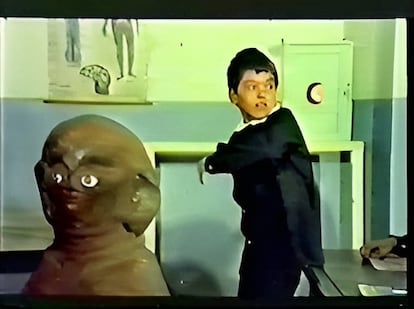
CutreCon is attended by up to 7,000 spectators, who fill 500-seat theaters. “It’s obvious that when you see trashy movies surrounded by more people, they work better. Now we are working on the selection for the 2025 edition, and we have already received 17 features. You can feel the passion,” says Palencia.
According to López, “the internet has helped us a lot in the search and in creating forums, especially for people like me who are interested in investigating their context, knowing who made these films and why.”
Palencia gives an example: “The Turkish E.T. that falls in love with a man was filmed in 1988, and it didn’t want to make fun of the LGTBQ+ community, quite the opposite. The gay people [in the movie] are treated with great respect. The director makes the alien peaceful so that the public sees pacifism and homosexuality with the best of intentions.”
Fausto Fernández recalls another: “A Malaysian film about a girl who turns into a kind of tiger. And, like an animal, she jumps to climb palm trees. It was successful because it has a feminist-ecological message, although the film turned out terribly. I only hope that the public, seeing trashy films, wakes up and reacts to the current dullness in cinema.”
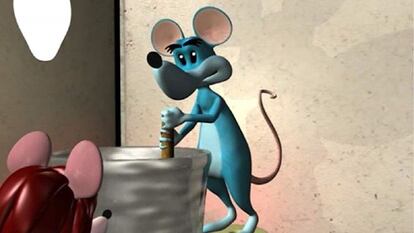
Sign up for our weekly newsletter to get more English-language news coverage from EL PAÍS USA Edition
Tu suscripción se está usando en otro dispositivo
¿Quieres añadir otro usuario a tu suscripción?
Si continúas leyendo en este dispositivo, no se podrá leer en el otro.
FlechaTu suscripción se está usando en otro dispositivo y solo puedes acceder a EL PAÍS desde un dispositivo a la vez.
Si quieres compartir tu cuenta, cambia tu suscripción a la modalidad Premium, así podrás añadir otro usuario. Cada uno accederá con su propia cuenta de email, lo que os permitirá personalizar vuestra experiencia en EL PAÍS.
¿Tienes una suscripción de empresa? Accede aquí para contratar más cuentas.
En el caso de no saber quién está usando tu cuenta, te recomendamos cambiar tu contraseña aquí.
Si decides continuar compartiendo tu cuenta, este mensaje se mostrará en tu dispositivo y en el de la otra persona que está usando tu cuenta de forma indefinida, afectando a tu experiencia de lectura. Puedes consultar aquí los términos y condiciones de la suscripción digital.
More information
Archived In
Últimas noticias
Welcome to the post-religion era: The idea of Christianity as the absolute truth has become obsolete
‘I thought you would like it’: The risky sexual practice popularized by TV shows and TikTok
The digitalization of tourism: ‘They promise experiences and gave us the worst possible one’
Mexican peso defies uncertainty with forecasts of a new period of stability in 2026
Most viewed
- Sinaloa Cartel war is taking its toll on Los Chapitos
- Reinhard Genzel, Nobel laureate in physics: ‘One-minute videos will never give you the truth’
- Oona Chaplin: ‘I told James Cameron that I was living in a treehouse and starting a permaculture project with a friend’
- Why the price of coffee has skyrocketed: from Brazilian plantations to specialty coffee houses
- Silver prices are going crazy: This is what’s fueling the rally










































